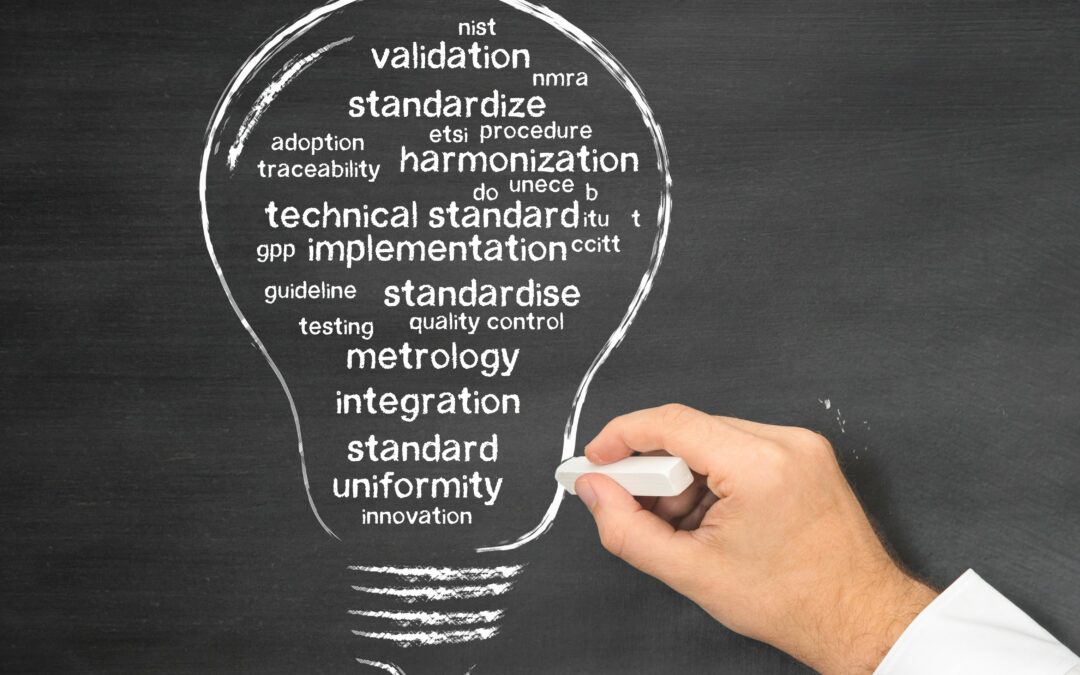In the industrial world, metrology plays an essential role.
It guarantees measurement reliability, product conformity and process performance. Yet its technical vocabulary may seem complex at first glance.
This article offers a clear and accessible explanation of the main terms used in metrology, to help you better understand this precise and indispensable field.
What is metrology?
General definition of metrology
Metrology is the science of measurement. It covers all methods, resources and practices designed to guarantee the accuracy and reliability of measurements in all fields: industry, health, research, etc.
Why is metrology important in industry?
Metrology ensures :
- Product compliance with standards.
- Safety and quality in industrial processes.
- International comparability of measurements
👉 Discover our metrology solutions for industry
The main metrology families
Scientific metrology
It focuses on the fundamental units (meter, kilogram, second, etc.) and their definition through universal constants. It is supported by national and international bodies such as the BIPM (Bureau International des Poids et Mesures).
Industrial Metrology
It’s the one that most concerns us in the production sector. It ensures that the measuring equipment used in the company complies with an adequate level of precision.
Legal metrology
It concerns measuring instruments used in commercial transactions or for regulatory purposes (commercial scales, road radars, water meters, etc.).
Metrology terms
Measuring instrument
A measuring instrument is any device used to measure a physical quantity (length, weight, temperature, torque, etc.).
Example: micrometer, balance, torquemeter (torque measurement tool).
Mesurande
The measurand is the physical quantity to be measured. Example: the temperature of a liquid, the torque of a screw, the length of a part, etc.
Résolution
Resolution refers to the smallest variation in magnitude that the instrument can detect. The finer it is, the more precise the measurement.
Precision, accuracy and fidelity: what are the differences?
Precision
Precision reflects the dispersion of results obtained from repeated measurements. A precise instrument gives results that are very close to each other.
Trueness
Trueness measures the difference between the measured value and the actual value. A fair instrument gives a value close to reality.
Repeatability
Repeatability is the ability of an instrument to consistently reproduce measurements when conditions remain the same.
🔍 Remember: a device can be precise but not accurate, or accurate but not faithful. The ideal is to combine all three!
Measurement uncertainty
Definition
Measurement uncertainty expresses the possible margin of error around the measured result. It is essential for the correct interpretation of a measurement.
Types of uncertainty
- Type A uncertainty: estimated by statistical methods.
- Type B uncertainty: estimated from experience, instrument specifications, etc.
Calibration and verification: two complementary concepts
Calibration
Calibration involves comparing a measuring instrument with a known, traceable reference, in order to determine any errors. It does not lead to acceptance or rejection. It is an essential part of any quality assurance plan.
Verification
Verification is the process of ensuring that an instrument meets defined requirements. The result is a decision on whether or not the device conforms.
Metrological traceability
What is traceability?
Metrological traceability guarantees that a measurement can be linked to a national or international reference, via an unbroken chain of calibrations, each with its own uncertainty.
Why is this crucial?
It enables :
- Worldwide comparability of results.
- Compliance with iso standards (such as ISO 9001 or ISO/IEC 17025)
- Credibility of results in audits and certifications.
Reference bodies in metrology
- The BIPM (International Bureau of Weights and Measures) is responsible for defining and maintaining the International System of Units (SI).
- COFRAC (French Accreditation Committee) : accredits calibration laboratories in France.
- LNE (National Laboratory for Metrology and Testing): the national reference in measurement.
Case study: metrology vocabulary applied to control equipment ACRN
Let’s take the example of a motorized torquemeter used to check the torque applied to a bottle in the food industry :
- Measurand: tightening torque in N-m.
- Measuring instrument: torquemeter.
- Accuracy: difference between the measurement obtained and the set value.
- Calibration: carried out regularly with a certified reference.
- Traceability: ensured by a chain of calibration to a national standard.
Find out more about our torque measurement solutions.
Conclusion
Understanding the vocabulary of metrology is essential for any company concerned with quality and precision. Concepts such as measurement uncertainty, calibration and traceability are more than just technical terms: they guarantee process reliability and customer satisfaction.
By making these concepts accessible, you’ll gain in autonomy in your quality procedures and in the efficiency of your controls.






